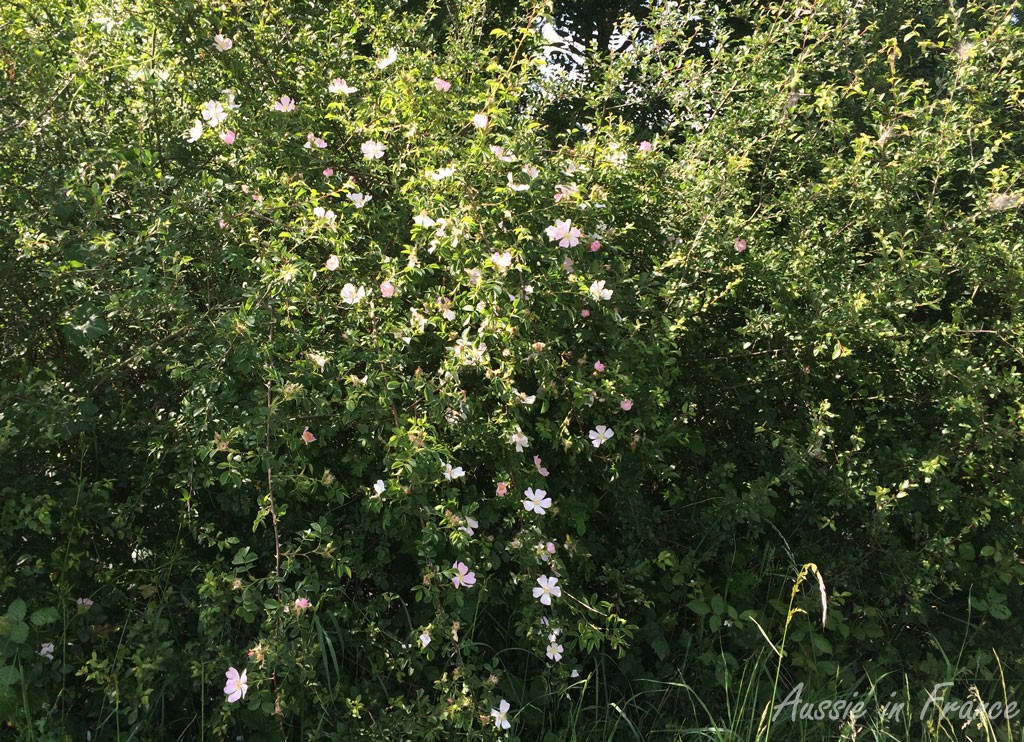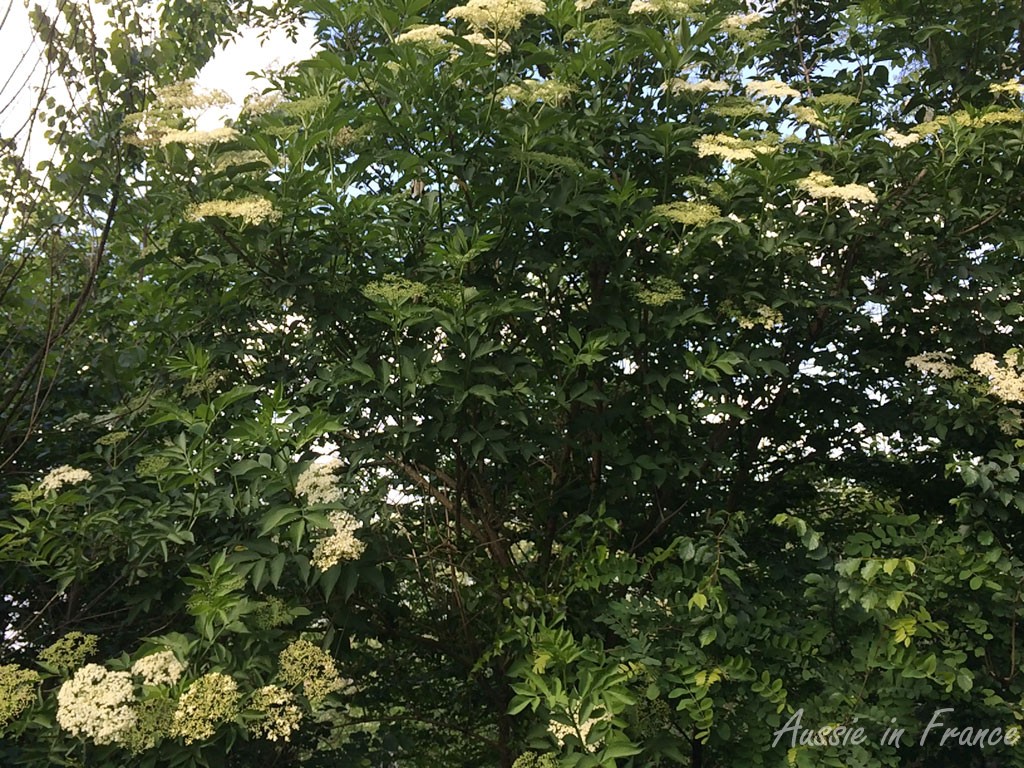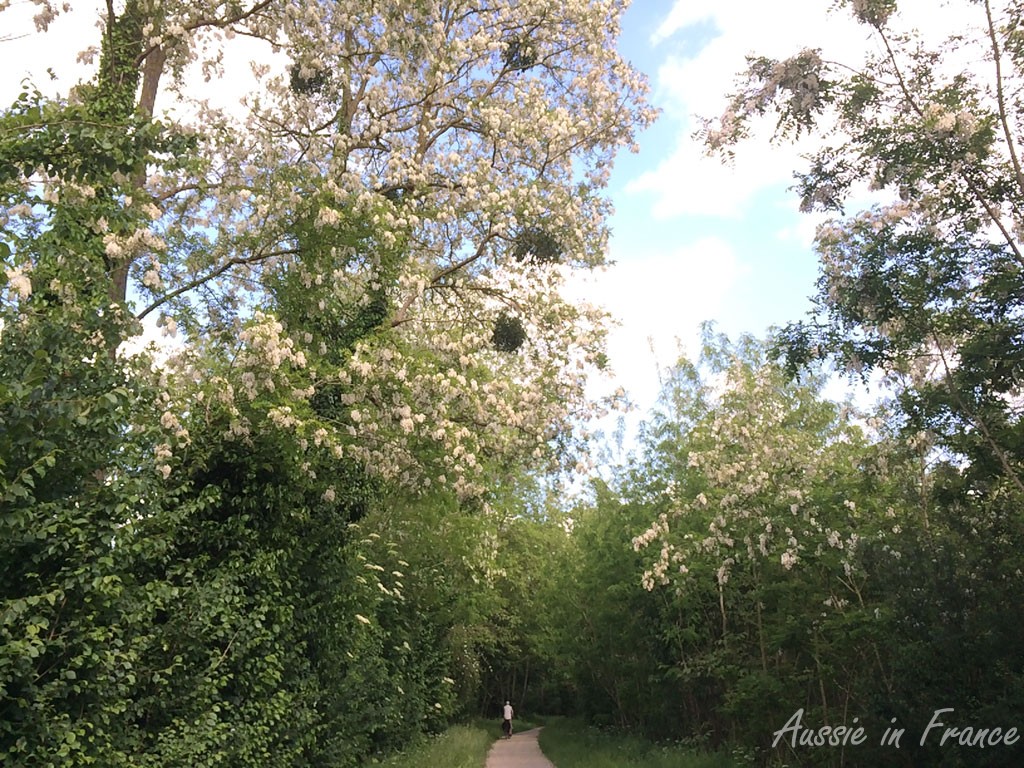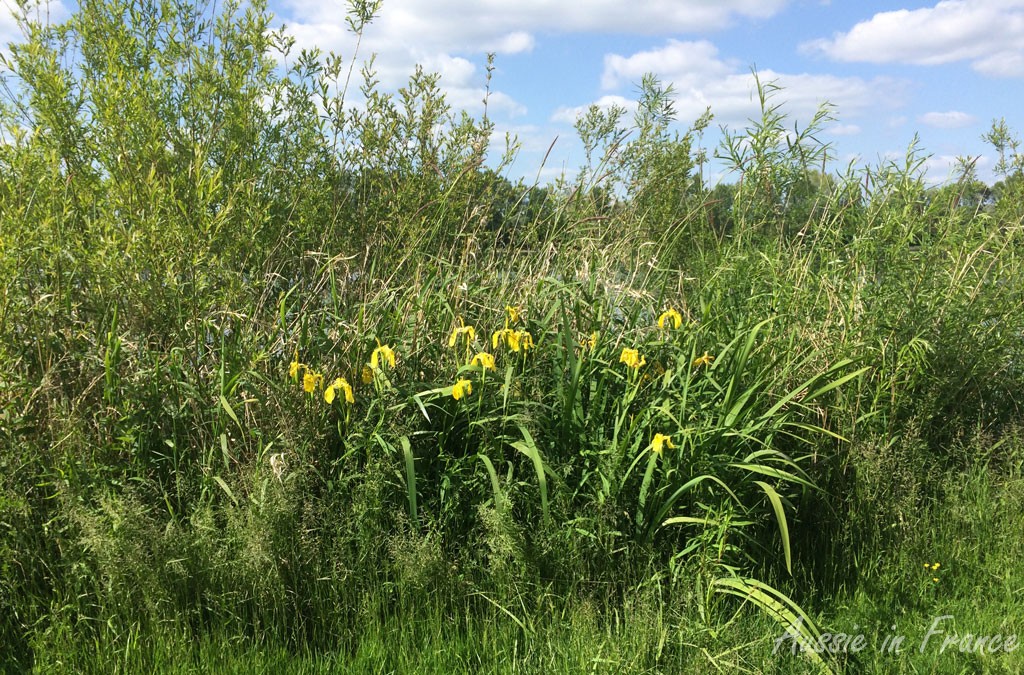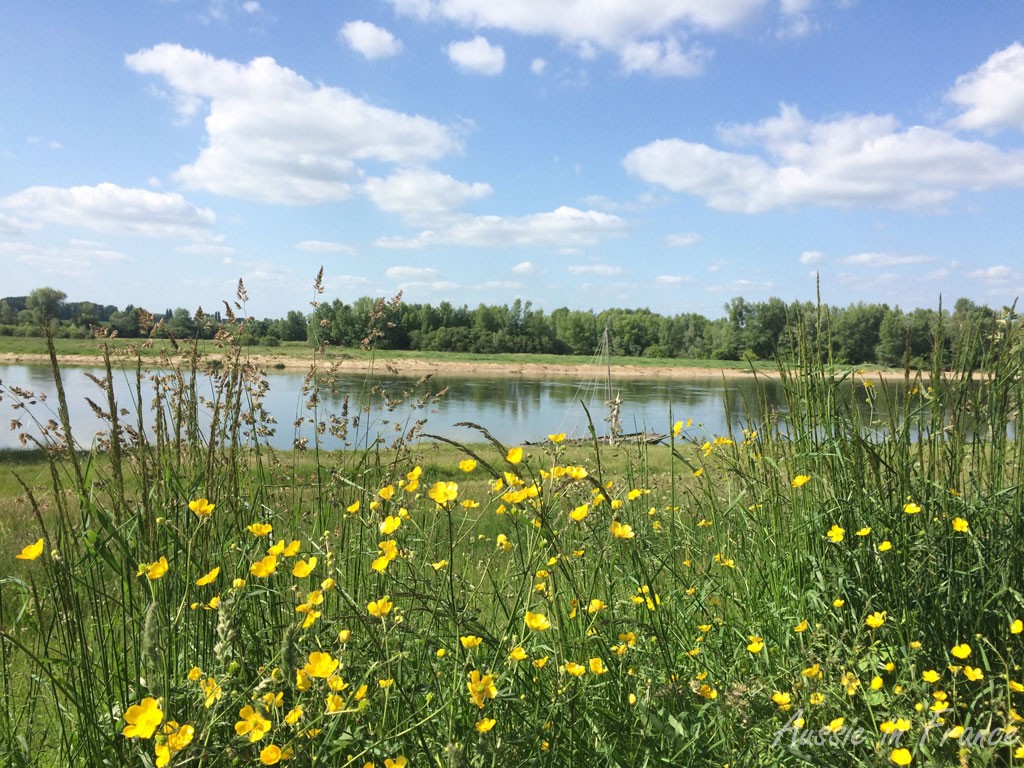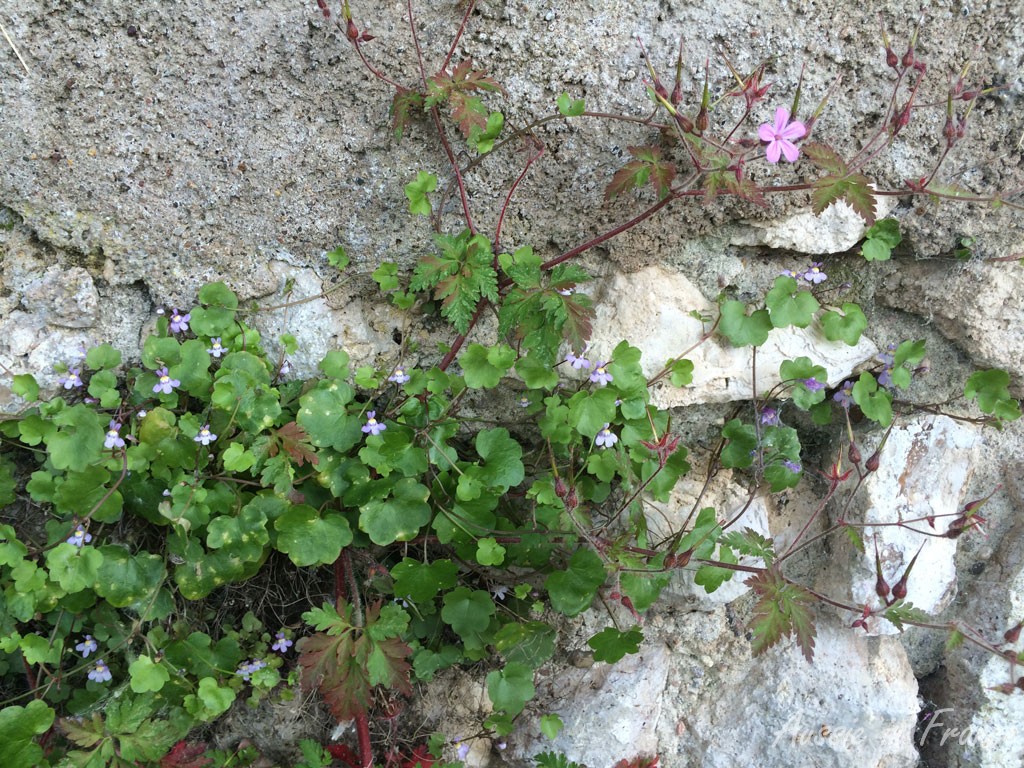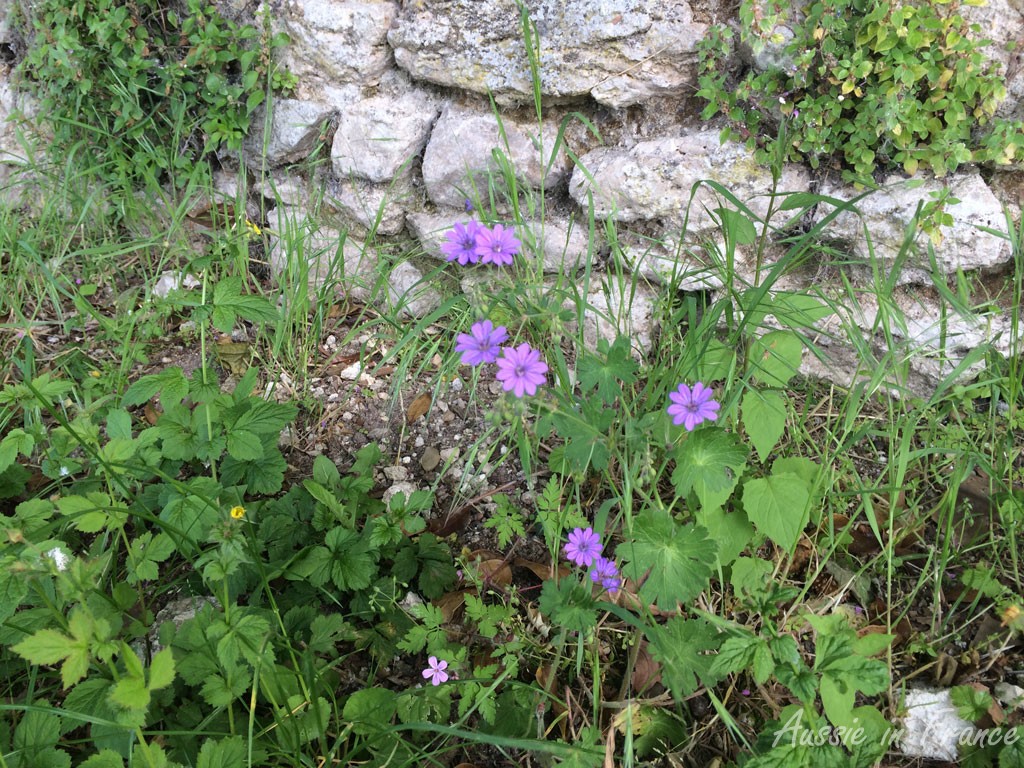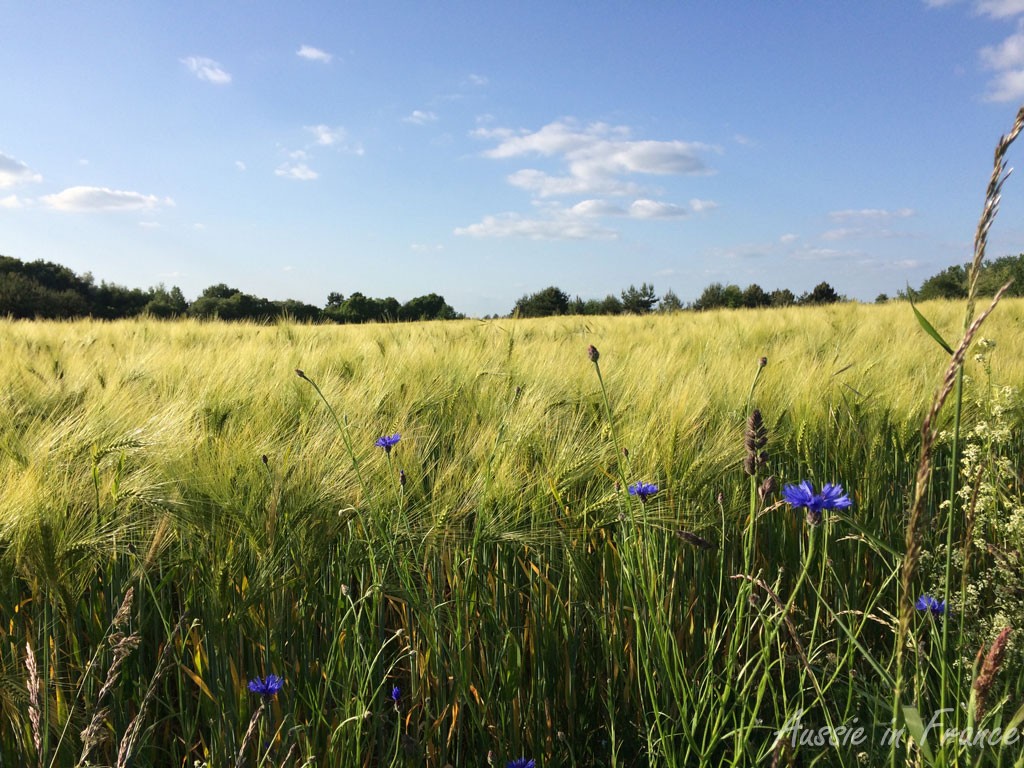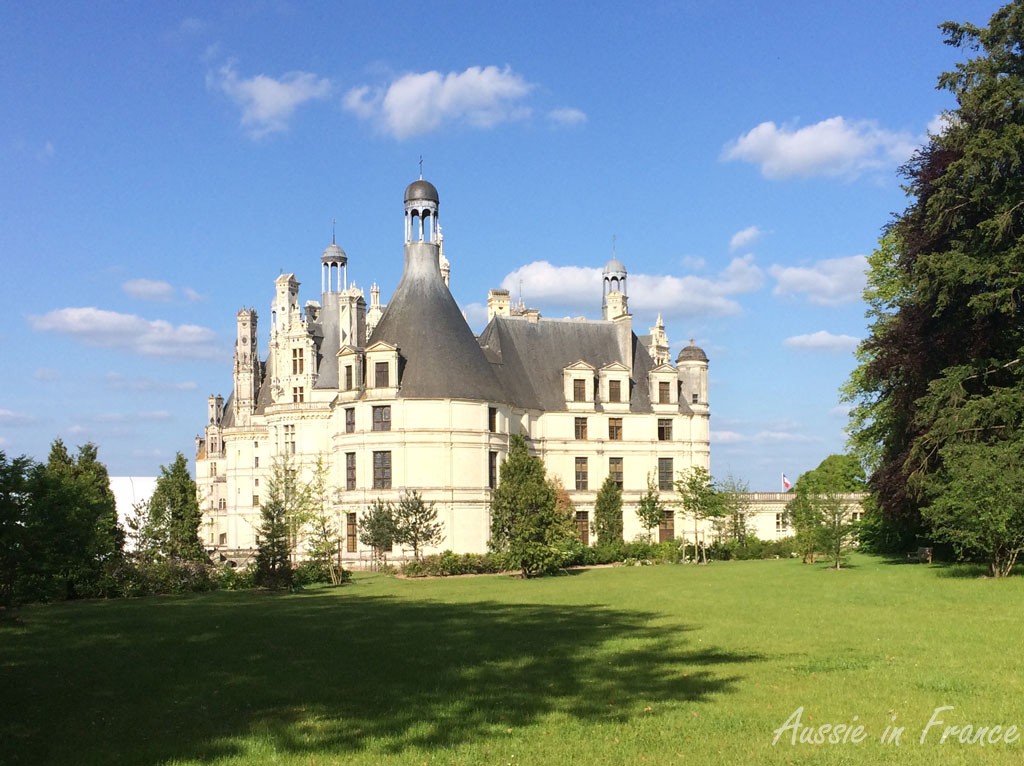It’s Sunday and we’ve been looking forward to having a break after a week of kitchen renovation (Jean Michel) and seismic concrete translation (me). During breakfast we look at the weather report. The temperature is below 20°C and rain is predicted so cycling is out. We decide to go for a walk along the Loire. By the time we dig up some potatoes for dinner and get ready, it’s our usual 12 noon.
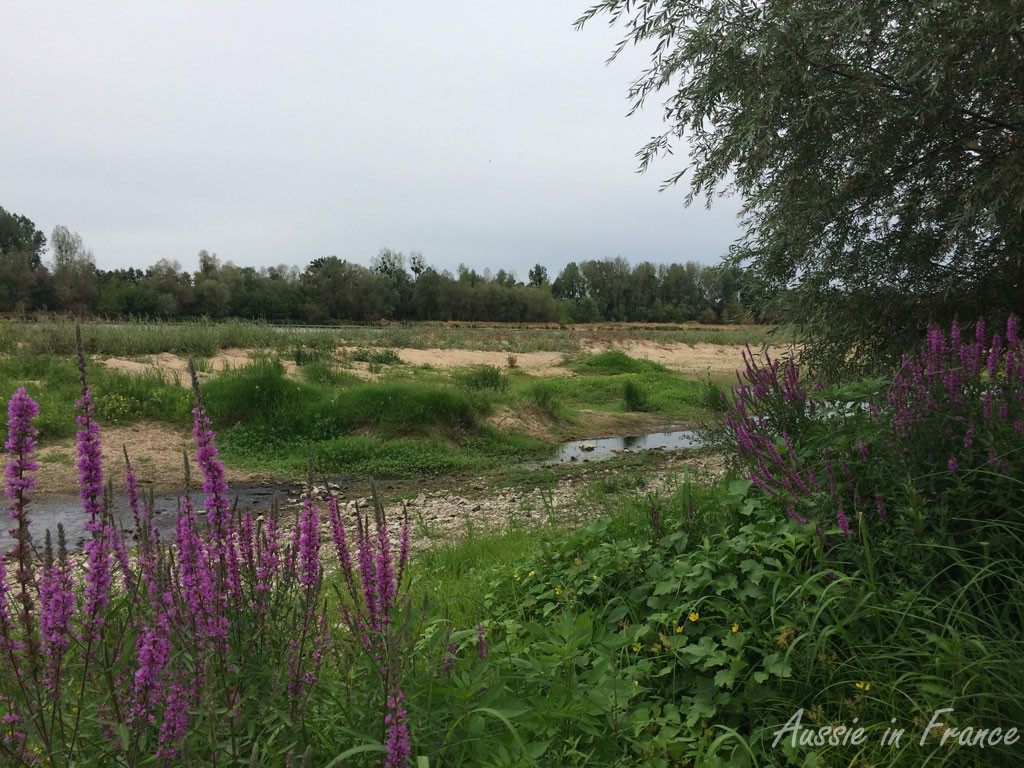
We turn right after leaving the house, then left at the end of the street so that we can cross the main highway along the Loire and join the path on the other side. Jean Michel immediately wants to push through the vegetation to the edge of the Loire but I insist that we walk along the path to the right until we see a suitable opening. We soon do. It takes us to a sandbank that is usually underwater but with the recent lack of rain, the level of the Loire has diminished considerably.
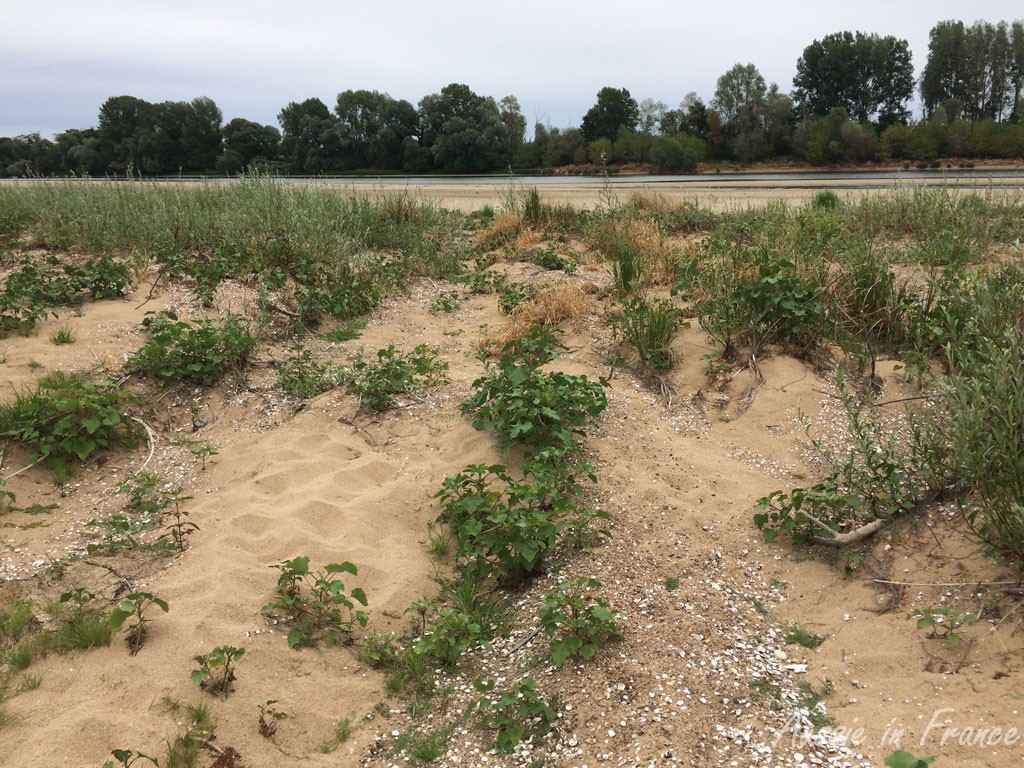
We walk onto the uncovered sandbank. It’s almost like being at the seaside, a very strange impression. The sand is soft and vegetation has already sprung up.
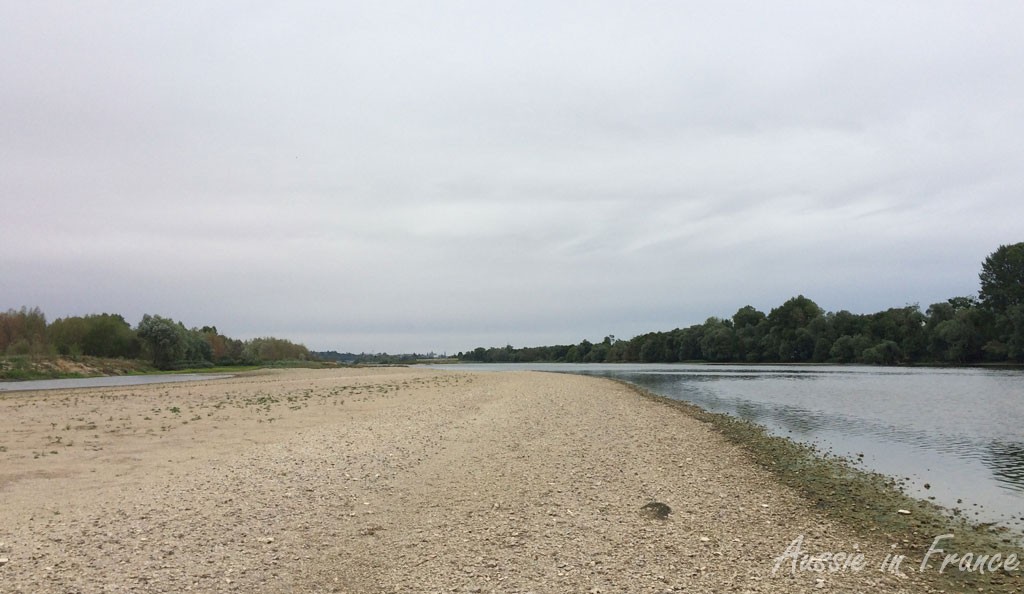
Far down to the left we can see Mitterand Bridge and the spires of Blois.
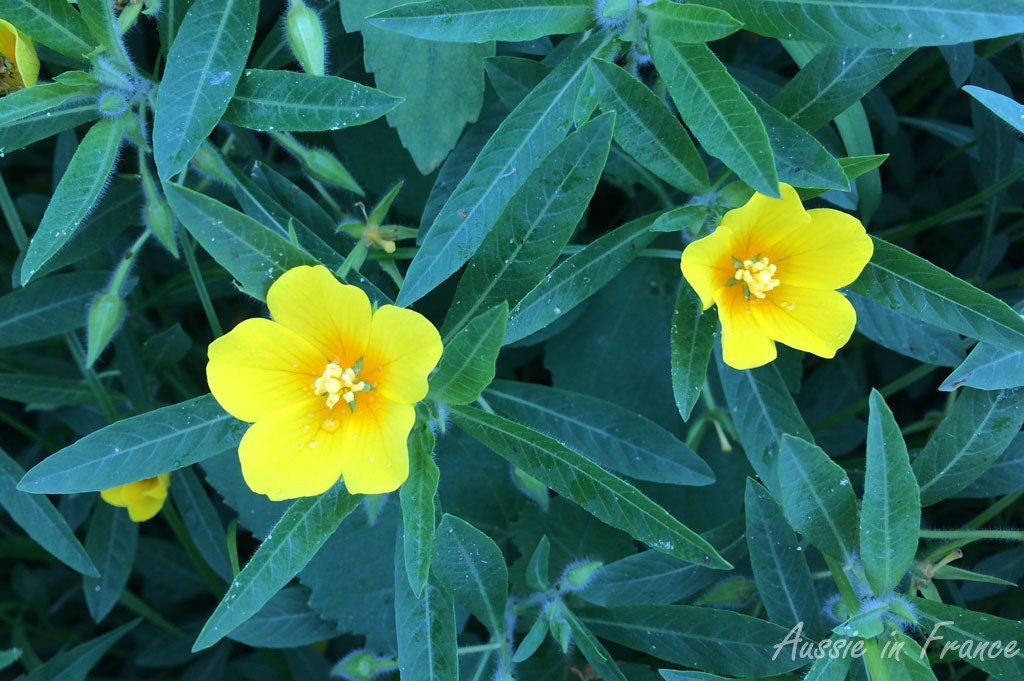
I’m intrigued by the wild flowers. I don’t know these yellow ones. We later discover they are Ludwigia peploides or floating primrose-willow, which is an aquatic plant and, sadly, Susan from Days on the Claise, expert in such things, tells us it’s an invasive alien.
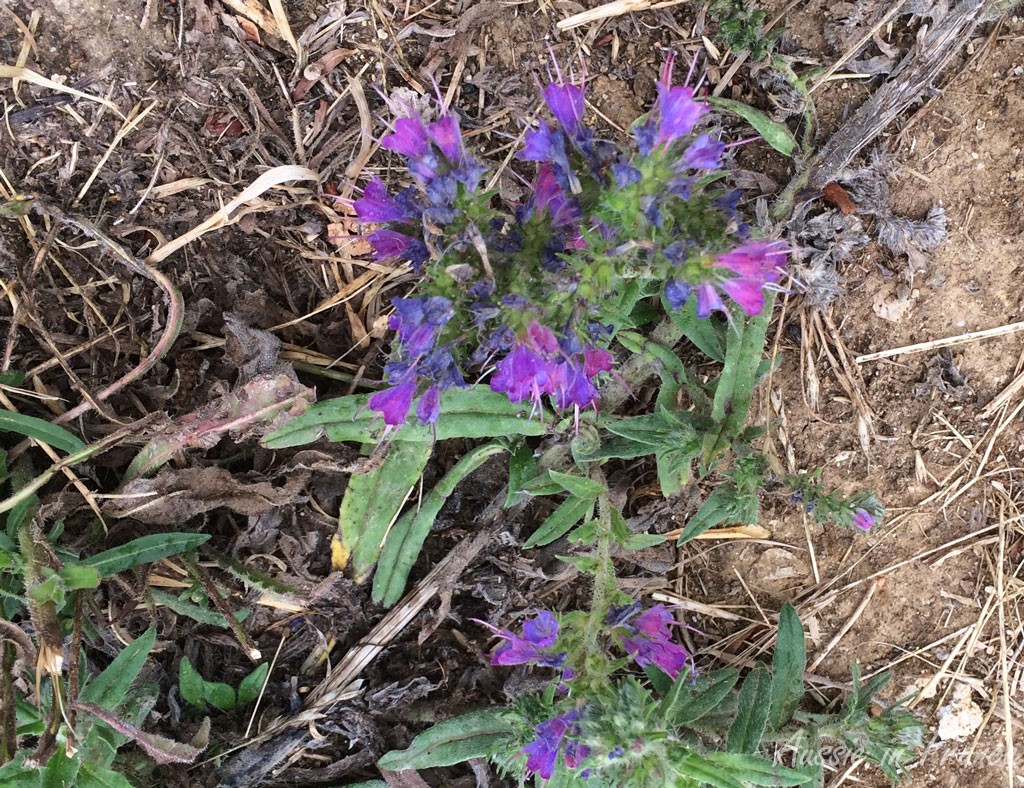
Nor these purple ones on the path beneath our feet. They look vaguely like cornflowers. Susan tells us they are long-leaved lungwort, which normally flower in late spring.
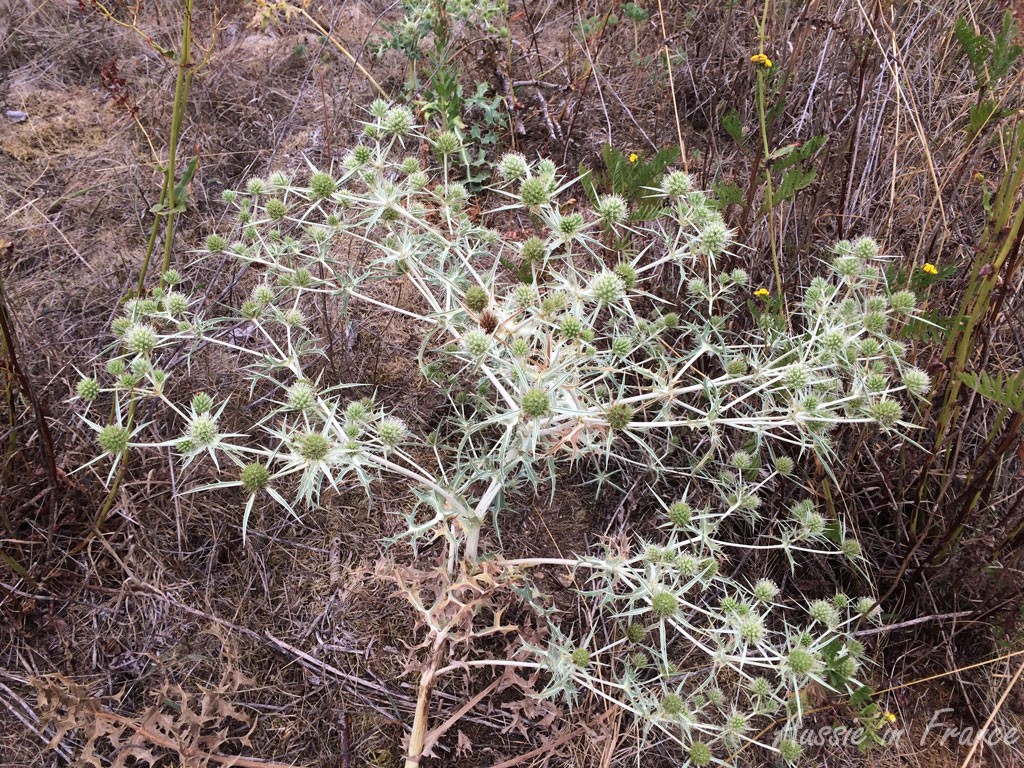
As predicted there is rain, but every time we think it’s more than just a few spits and put our jackets on, it stops ! And we get hot if we keep them on when it isn’t raining …
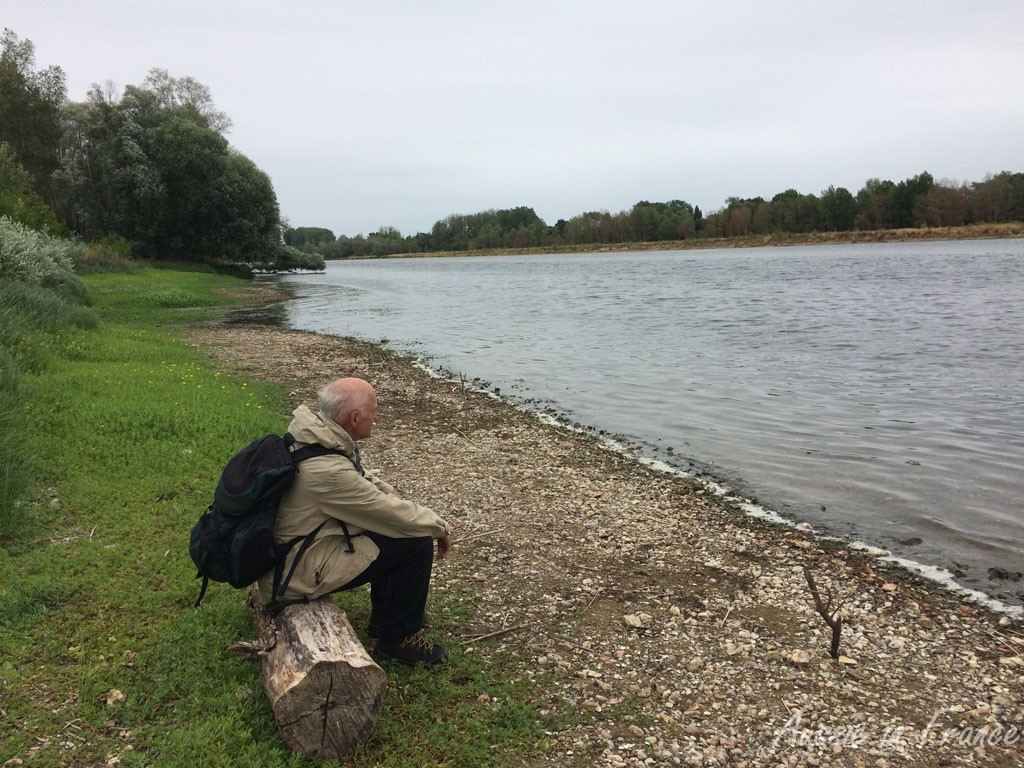
We continue along the path which provides glimpses of the Loire from time to time until we get to Fosse aux Poissons (the fish pool) where there is even a log to sit on – which we do because my feet are starting to burn.
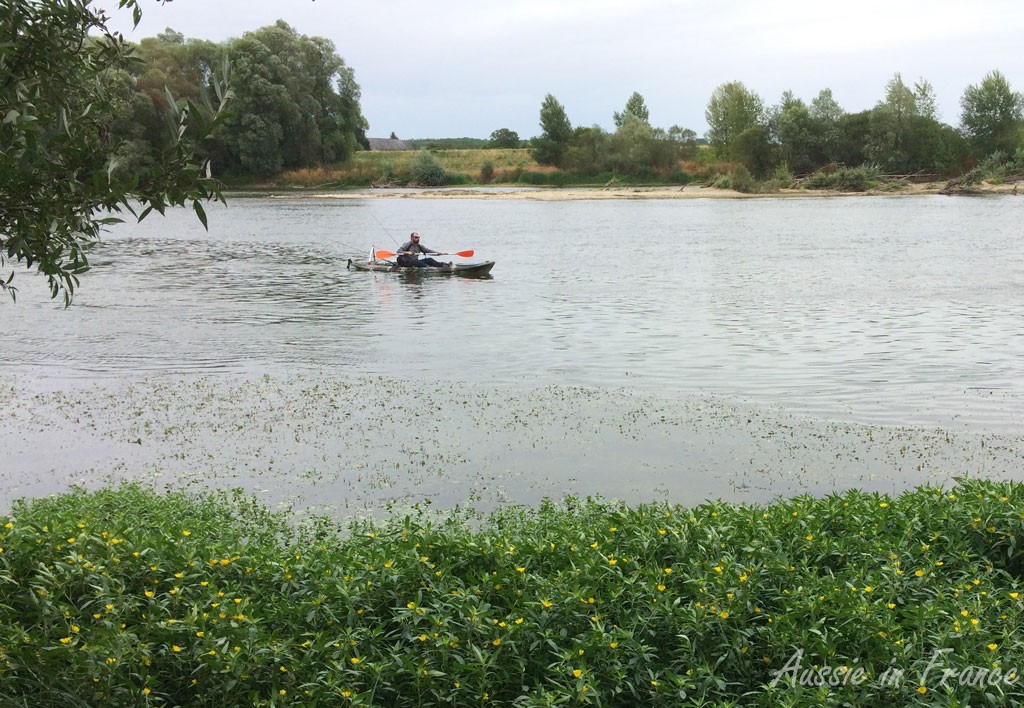
While we are resting, a kayak comes past. Jean Michel scrutinises it. “That looks like a great idea for a fisherman”, he says, “not that I have any time for fishing this year.” I can hear regret in his voice.

We start thinking about going back as we’ve already been walking an hour and a half. There is a parking lot at Fosse aux Poissons so we walk up the embankment to the highway and cross over. On the other side, there is a steep grassy bank that leads down to another path. We scramble down (well, I scramble – Jean Michel is a very practised walker and takes it in his stride).
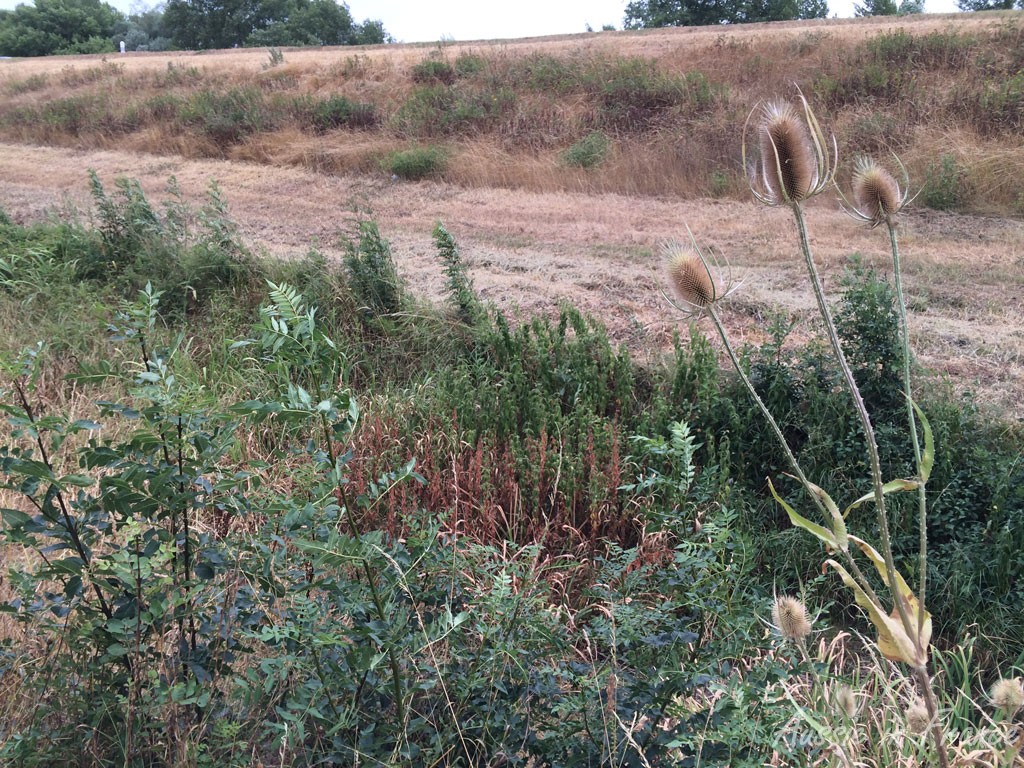
I notice a strange flower waving in the wind. “We call them combs”, says Jean Michel, but they look more like brushes to me. It appears to be a Dipsacus fullonum or teasel.
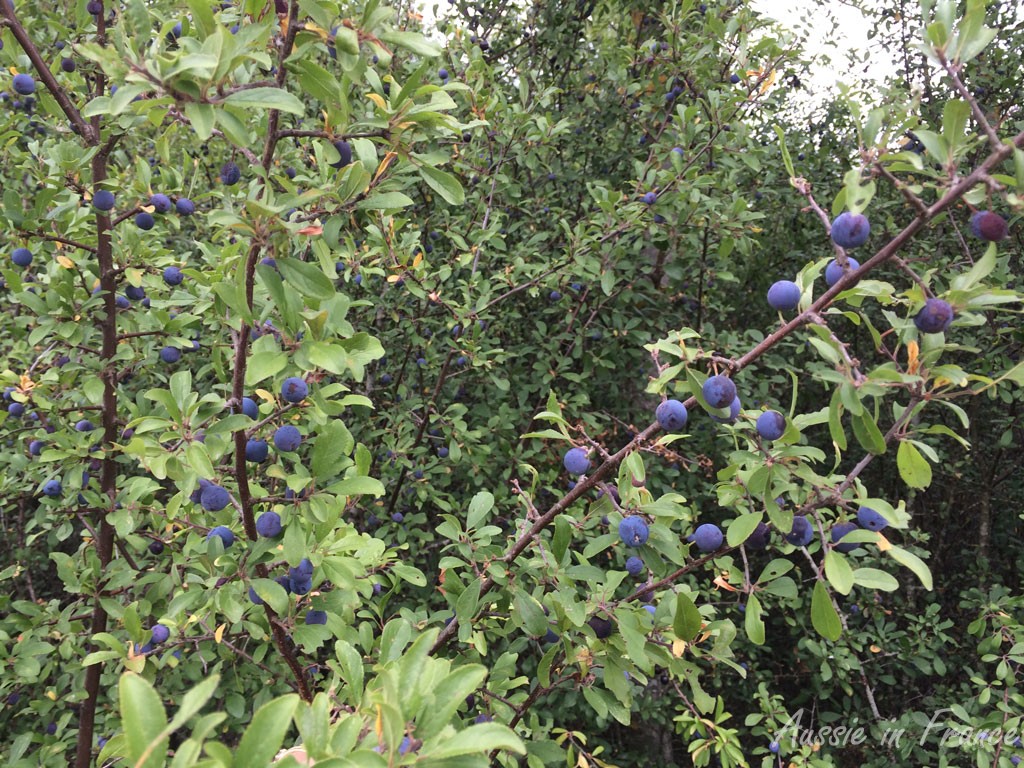
We’re hoping the path goes as far as the Chouzy-sur-Cisse turnoff which we seem to have overshot. Jean Michel tastes some unripe mirabelle plums and then points out the black thorn bush to me. It’s tender shoots are used to make the liqueur that we tasted when we bought our three tonnes of free stone. “The berries are very bitter”, he tells me. He doesn’t taste them.
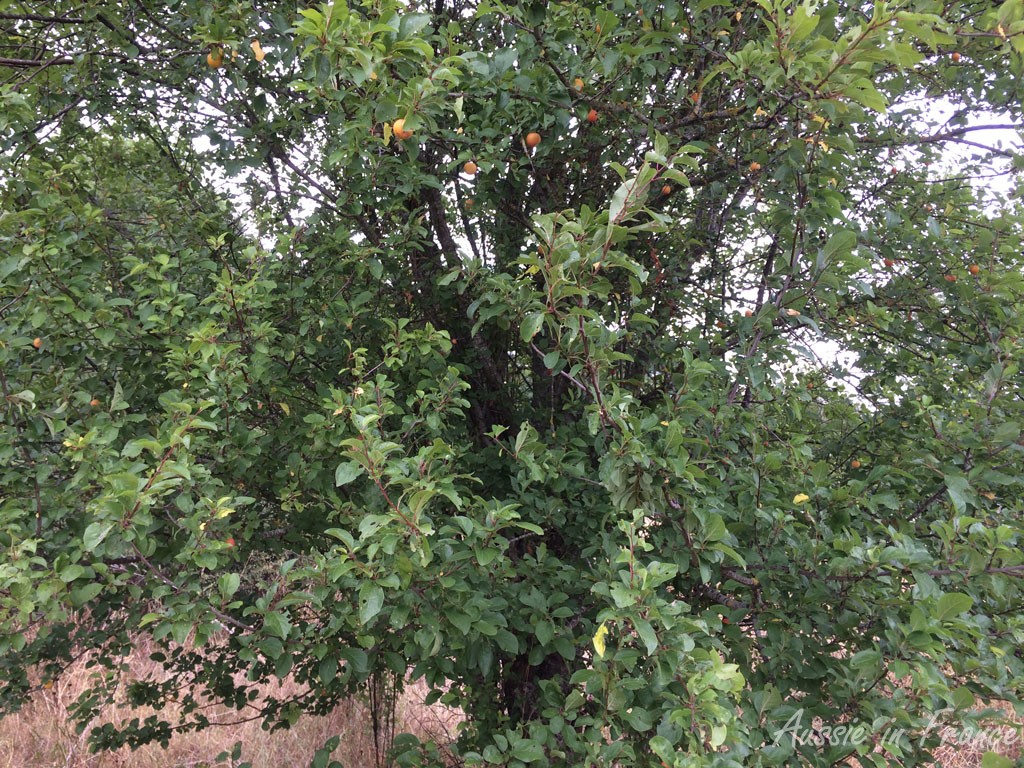
Our path ends with a very closed looking gate so I have to scramble up the bank again. Fortunately we only have to walk about 200 metres alongside the 90 kph highway before going left towards Chouzy to take the walking path to the right that will take us home.
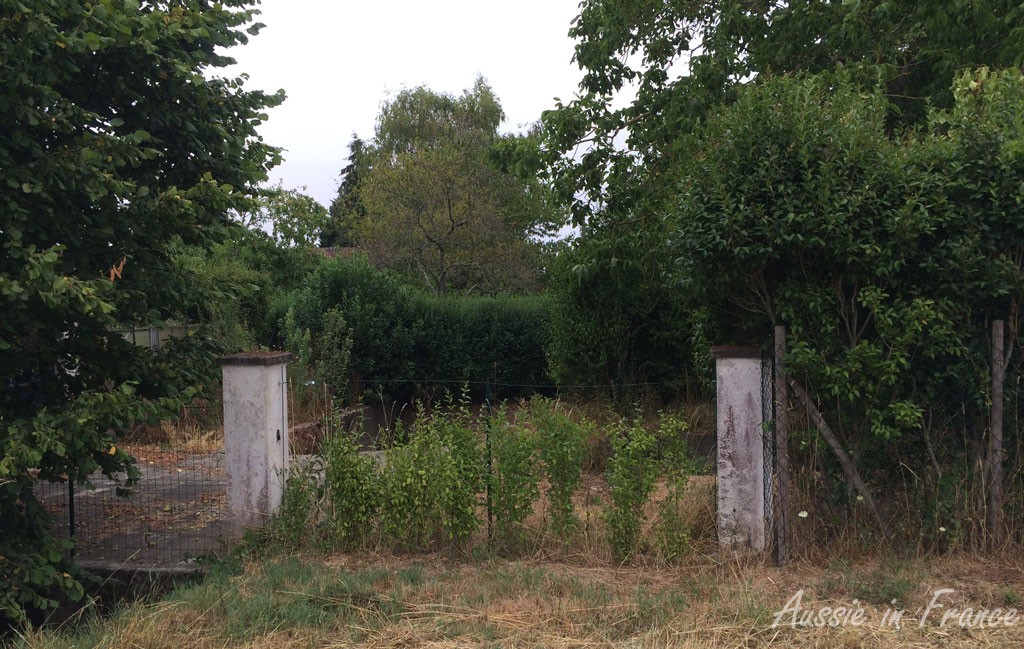
By now my feet are killing me so we find a useful little stone bridge to sit on while we eat some biscuits. It starts raining in earnest so we finish our excursion with our jackets and hoods on.
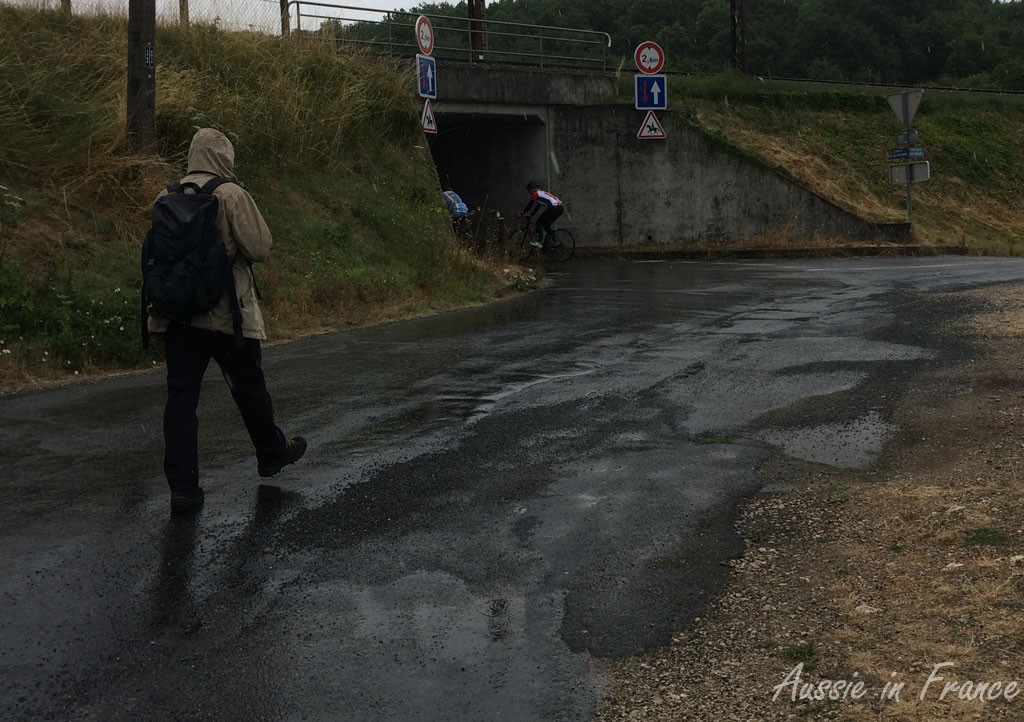
I’m glad to get back after walking 9 K in 2 ½ hours which is not very fast, I know, but quite an exploit for me !




